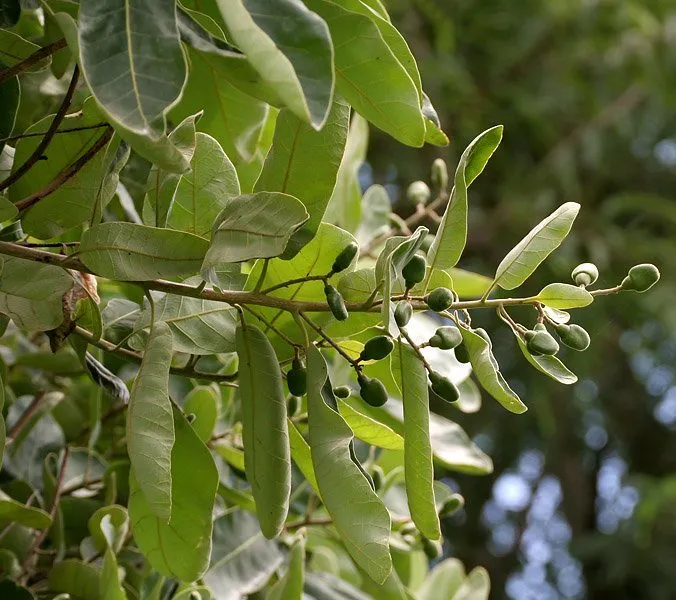
Table of Contents
Bhallataka Plant
You’ve probably heard about the bhallataka plant, but what is it and what does it do? Read on to learn more about the benefits of this important Ayurvedic herb. We’ll discuss the medicinal properties of this plant, and any side effects you may experience when using it. Here, we’ll look at some of the most common uses for bhallataka, as well as some of the plant’s side effects.
Bhallataka plant as an important Ayurvedic Herb
Ayurvedic practitioners use a semi poisonous plant called Bhallataka for various diseases. Its local name is geeru beeja and its English name is marking nut. The herb is widely used in Ayurvedic medicine, due to its medicinal value. It is a member of the Anacardiaceae family, and contains bioflavonoids and phenolic compounds.
The powder from the Bhallataka plant is a useful remedy for diseases caused by the vata spleen and pancreas. It is also a carminative. To make a Bhallataka paste, the plant’s fruits are boiled in eight parts of water and one eighth of the water is filtered. It is then applied to the affected area.
Diseases that can be treated with bhallataka
The Bhallataka plant is a popular remedy used for several diseases. It contains anthraquinones, its main constituent, bhilawanol, is considered poisonous. However, it has therapeutic value in treating several ailments, including asthma, cancer, and epilepsy.
Its common name, Semecarpus anacardium, comes from its use by washermen as a marking tool for clothes. The red-orange portion of the fruit is harvested for medicinal use. It contains various active compounds such as bioflavonoids, minerals, and vitamins. It is also used in traditional Ayurvedic medicine to treat piles and skin diseases.
Medicinal Properties of Bhallataka plant
Bhallataka plant is considered as a potent Ayurvedic herb. It is a hot herb and must be purified before use. Medicinal uses include curing diseases like piles and skin disorders, and improving digestion and immunity.
The Bhallataka plant is considered to be semi-poisonous, but its medicinal properties are vast. It has been used to treat many diseases, from asthma to epilepsy. The seeds are a useful medicinal herb for treating worm infestations. The plant is also used for treating dermatitis due to the presence of its tarry oil. Some studies have shown that it has anti-inflammatory and anti-allergic properties.
Bhallataka is given along with guda (jaggery) for satata vishama jwara (viral fevers).
Taila, ghrita and mishraka prepared with trikantaka, nisha, Bhallataka etc. is indicated for vatakaphaja prameha, pittaja prameha and tridoshaja prameha respectively.
Asava prepared with Bhallataka and other drugs is indicated for prameha.
Lepa prepared with Bhallataka and other drugs for arshas.
Kshara prepared by anthardhooma vidhi with Bhallataka, trikatu, triphala and lavanatrayam is indicated for grahani, pandu, gulma, udavartha, shoola.
Lepa prepared with bhallatalka asthi, kaseesa (Ferrous Sulphate), danti (Baliospermum montanum) etc. drugs is mentioned for the management of the granthi (tumor).
Kwatha (decoction) prepared with vyosha (trikatu), Bhallataka, vacha (Acorus calamus) cures thrisna (thirst).
For Krishna karma (colouring), gomutra bhavita (mixed with cow’s urine) Bhallataka stored in loha patra (iron vessel) mixed with gokshira (cow’s milk) and applied externally to impart normal colour of skin in vrna chikitsa (wounds).
Bhallataka taila is indicated as a best drug for romasathana (hair remover) and indicated for maha kushta (skin diseases)
Side Effects of Bhallataka plant
The Bhallataka plant contains constituents like catechol, cardol, anacardic acid, and sernicarpoi. The oil from Bhallataka is strong and can cause boils if consumed in large quantities.
Even though Bhallataka plant is widely available, inexpensive, and has a variety of ethno-medicinal uses, this plant can act as a poison when taken without proper purification. Its main side effects include irritation, blisters, toxicity, and contact dermatitis.
